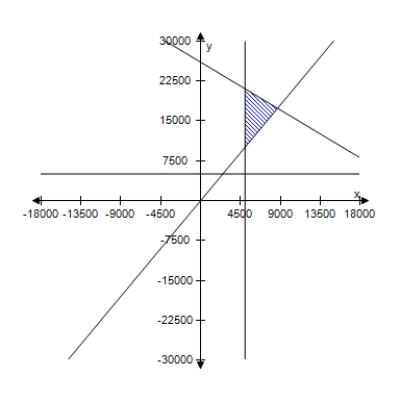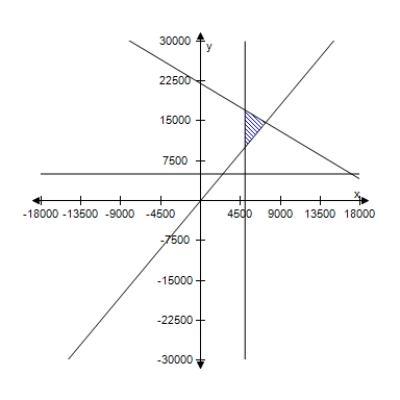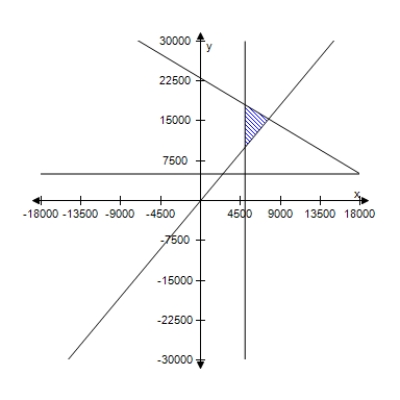Multiple Choice
A person plans to invest up to $26,000 in two different interest-bearing accounts.Each account is to contain at least $5000.Moreover, the amount in one account should be at least twice the amount in the other account.Find and graph a system of inequalities to describe the various amounts that can be deposited in each account.
A) 
B) 
C) 
D) 
E) 
Correct Answer:

Verified
Correct Answer:
Verified
Q34: Two cheeseburgers and one small order of
Q100: Find the minimum value of the
Q101: Solve the system by substitution, if
Q102: Sixty liters of a 43% acid
Q103: Find the value of x, y and
Q104: Solve the system by the method
Q107: Use any method to solve the
Q108: The linear programming problem has an unusual
Q109: Find the dimensions of the rectangle
Q110: Select the correct graph of the